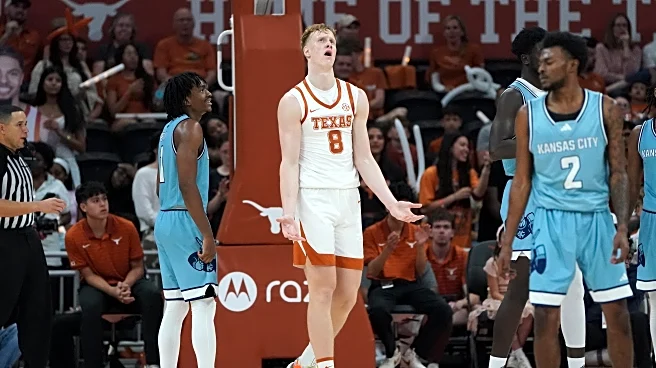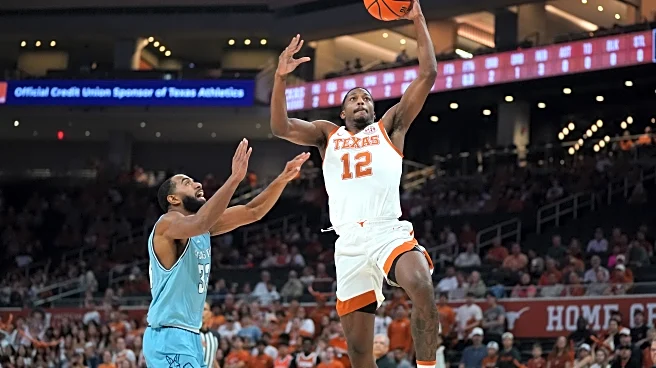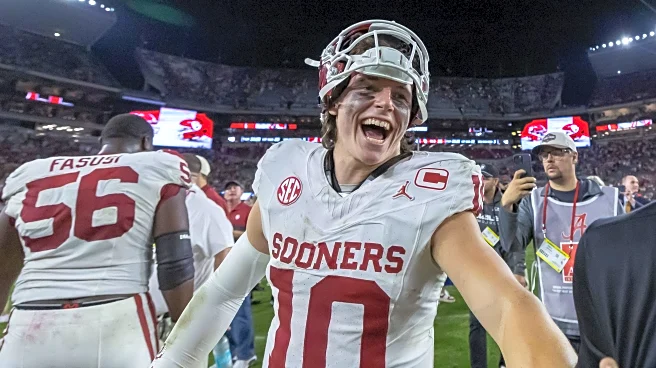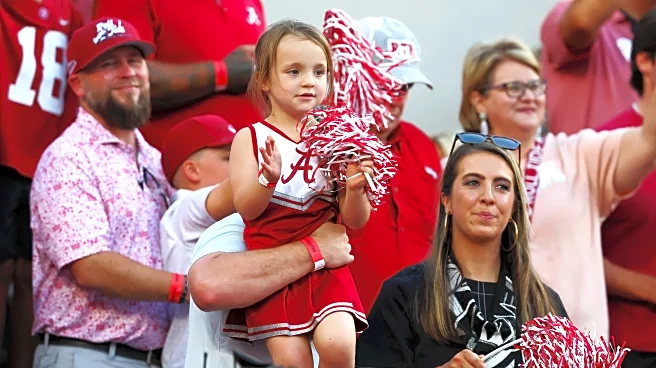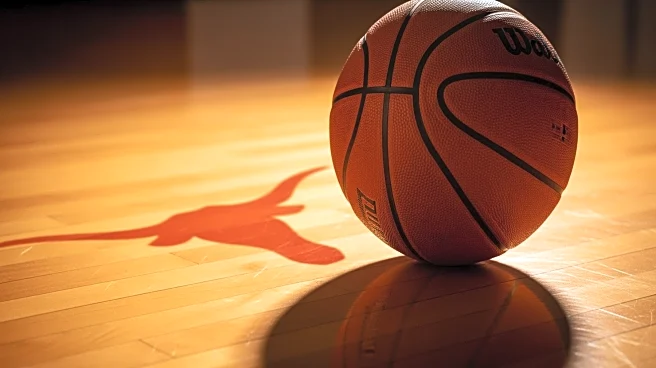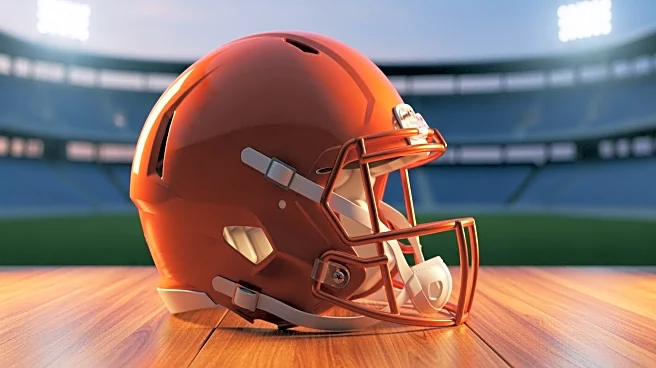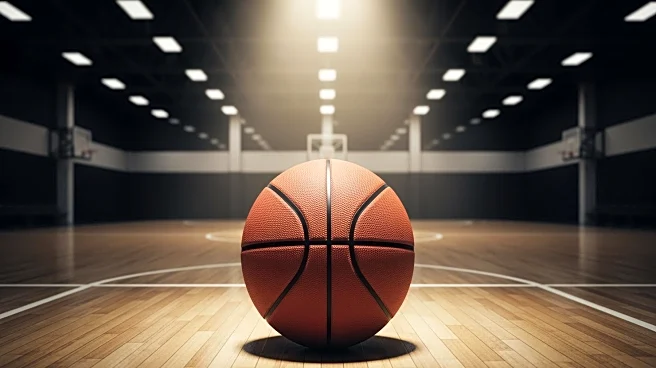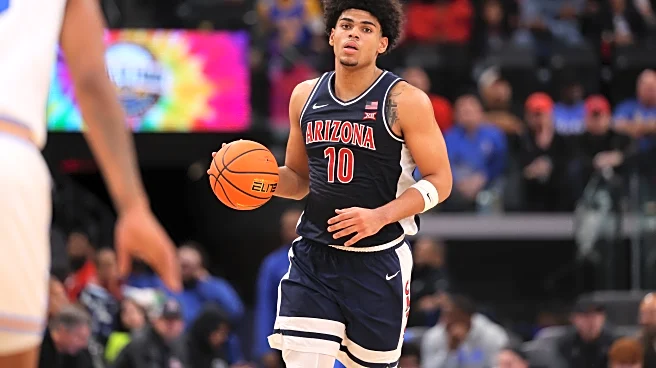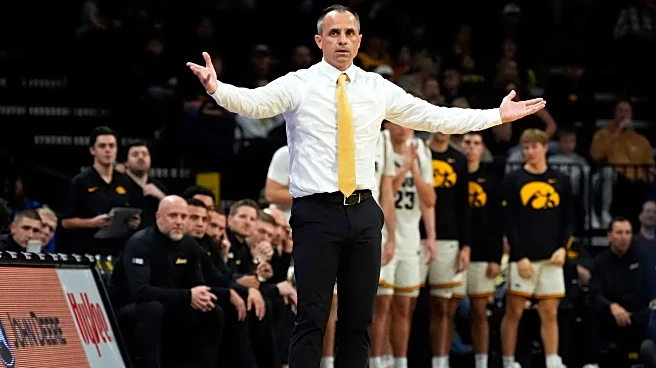AUSTIN, Texas — Sitting at the podium in the T-Association room at Darrell K Royal-Texas Memorial Stadium on Monday morning, Texas Longhorns head coach Sean Miller was drawing a blank.
Who was it that the Longhorns had hosted at the Moody Center on Saturday?
That would be the Kansas City Roos, Miller was reminded, in a performance so forgettable that Miller couldn’t recall which overmatched opponent Texas had faced in the third game of a four-game homestand that concludes on Tuesday when the Rider
Broncs come to Austin.
If this opponent also gets memory holed by Miller, his players, and the burnt orange faithful, it will be because the Broncs are as easy to forget as the Roos — Rider is also a bad basketball team, ranking No. 318 nationally in BartTorvik’s efficiency rankings, playing bad offense and bad defense in suffering lopsided defeats to Virginia and Rutgers.
Kevin Baggett’s team plays slowly, shoots poorly from three and poorly from two, turns the ball over at a high rate, and struggles to force turnovers. Just how bad are the Broncs at shooting the basketball? Rider is dead last in the country in three-point shooting percentage at 15.6 percent. In fact, the team has shots blocked at a higher rate — 17.1 percent, 355th nationally — than it makes threes, truly remarkable ineptitude barely mitigated by the small sample size and two of the team’s three games coming against high-major opponents.
Since Tuesday’s outcome won’t be in question, Texas has other objectives to achieve after a poor performance against Kansas City in Saturday’s 16-point win that saw the Horns shoot less than 40 percent from the floor, including 20 percent from beyond the arc. Texas also struggled at the free-throw line, hitting 60.7 percent of their attempts.
“I didn’t have a great feeling coming out of our last game. Our team didn’t have a great feeling coming out of our last game. We didn’t play well. We have to play better, and I thought we fell victim into something that’s easy to do in the game of basketball, and that is when the shot’s not falling, especially as an individual player, you can get down on yourself,” Miller said.
“You can get disappointed as a result of the shot, the free throw, the three-point shot, and at times, despite your best attempt, it just doesn’t seem like anybody is shooting well. When that happens, you have to be able to play through it, do other things, and get yourself out of it. I don’t know that we ever got ourselves out of it, and I think it’s one of the many lessons you can learn early in the season. And that is — when there are times when the ball is not going to go into the basket, we have to play with amazing energy, togetherness, move forward, and not let that affect other parts of our game or the next play.”
A career 37.1-percent shooter from three entering the season, senior guard Jordan Pope is 3-of-18 shooting from three over his last three games (16.7 percent), including missing all six of his attempts against Kansas City.
“Every elite shooter goes through patches where the ball doesn’t go in, and he’ll come out of it — wouldn’t surprise me if it happens for him tomorrow,” Miller said.
Graduate guard Tramon Mark has shot 35.5 percent from three over the last two seasons, but is off to a 25-percent start, making just one of his five attempts on Saturday
Since those two players project as the highest-volume three-point shooters on the team, the Longhorns not only need Pope and Mark to shoot at above their career rates, they need them to maintain a high level of intensity defensively even if their shots aren’t falling. For Mark, that means serving as a lockdown perimeter defender. For Pope, it means striving not to be an absolute liability who gets hunted by opposing scorers.
Since Miller has entrusted Pope with point guard duties, making him the quarterback of the offense and the extension of the coaches on the court, the Texas head coach has had conversations with his lead guard about the expectation to impact the game beyond scoring.
“Your assists, your turnovers, your defense, your body language, your communication, all that needs to be in place if the ball’s not going in,” Miller said.
Truthfully, it needs to be in place even when the ball is going in.
Texas also needs better shooting from senior guard Chendall Weaver, who put in extra time on his three-point shot throughout the offseason, but has missed his first nine attempts. After shooting over 40 percent last season and as a freshman at UTSA, Weaver has proven he can be effective from beyond the arc.
The player Miller wants to shoot more frequently is junior forward Camden Heide, who missed the Lafayette game with a shoulder injury. Over 34 minutes this season, the Purdue transfer has only attempted one three.
“The month of November, as we play more games, as we’re around each other more, as we learn the strengths and weaknesses of our team, my hope is that something like Cam Heide being a guy who takes threes every game, that shouldn’t be in question. He’s too good of a shooter not to get a couple open threes every game,” Miller said.
Those threes should be available because one of the strengths that Texas has shown early in the season is the ability to get the ball into the paint, which is putting pressure on opponents to defend around the rim without fouling. Especially against the weak non-conference opponents, that’s been a real struggle, producing frequent free-throw trips for the Longhorns.
With a free-throw rate of 45.4 percent, Texas ranks 67th in that category — even in the two closed scrimmages without sophomore center Matas Vokietaitis and graduate forward Lassina Traore, the Horns were able to get to the line. But converting at the line has been a struggle for the Texas frontcourt.
Vokietaitis has taken a quarter of the team’s free throws through four games, hitting 62.1 percent, roughly in line with what he shot last year at Florida Atlantic. After an excellent start against Duke in hitting 9-of-10 at the line, Vokietaitis is shooting 50 percent on 18 attempts over the last two games. Because Vokietaitis was clearly frustrated by missing shots around the rim when he was fouled by Kansas City, the 6-of-12 performance on Saturday appeared mental — the big Lithuanian can’t let missed opportunities for three-point plays turn into empty trips to the line and then allow that frustration to linger throughout the game.
Traore and sophomore Nic Codie have also struggled, both going 7-of-13 (53.8 percent) in the early going. Since Traore shot 69.2 percent over his first three seasons and Codie is regarded as a good shooter, both players should improve moving forward.
It’s the type of trajectory that Miller needs from the entire team before the crucible of SEC play begins.
“I think we have the right intentions, it’s just a work in progress,” Miller said.
Tip is at 8 p.m. Central on SEC Network.
